
Andreas Gursky is a German photographer and professor at the Kunstakademie Düsseldorf, Germany.

Ghulam Mohammed Sheikh is a painter, poet and art critic from Gujarat, India. He was awarded the Padma Shri in 1983 and Padmabhushan in 2014 for his contribution in field of art.

Dhruva Mistry is an Indian sculptor.

Ranjit Hoskote is an Indian poet, art critic, cultural theorist and independent curator. He has been honoured by the Sahitya Akademi, India's National Academy of Letters, with the Sahitya Akademi Golden Jubilee Award and the Sahitya Akademi Prize for Translation. In 2022, Hoskote received the 7th JLF-Mahakavi Kanhaiyalal Sethia Award for Poetry.

Akbar Padamsee was an Indian artist and painter, considered one of the pioneers in modern Indian painting along with S.H. Raza, F.N. Souza and M.F. Husain. Over the years he also worked with various mediums from oil painting, plastic emulsion, water colour, sculpture, printmaking, to computer graphics, and photography. In addition, he worked as a film maker, sculptor, photographer, engraver, and lithographer. Today his paintings are among the most valued by modern Indian artists. His painting Reclining Nude was sold for US$1,426,500 at Sotheby's in New York on 25 March 2011.
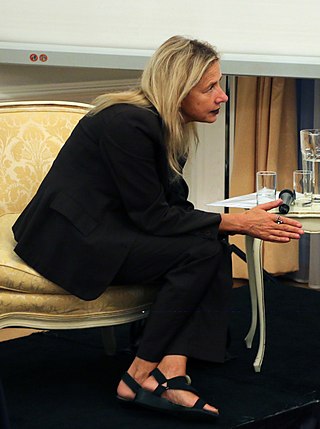
Iwona Maria Blazwick OBE is a British art critic and lecturer. She is currently the Chair of the Royal Commission for Al-'Ula’s Public Art Expert Panel. She was the Director of the Whitechapel Art Gallery in London from 2001 to 2022. She discovered Damien Hirst and staged his first solo show at a public London art gallery, Institute of Contemporary Arts in 1992. She supports the careers of young artists.

Lalita Lajmi was an Indian painter. She was a self-taught artist born into a family involved in the arts, and was very fond of classical dance even as a child. She was the sister of Hindi film director, producer, and actor Guru Dutt. In 1994, she was invited to the Guru Dutt Film Festival, organised by Gopalkrishna Gandhi, the Indian High Commissioner at Nehru Centre, London. Her work was also influenced by Indian films such as those made by her brother, Satyajit Ray and Raj Kapoor.

Arpita Singh is an Indian artist. Known to be a figurative artist and a modernist, her canvases have both a story line and a carnival of images arranged in a curiously subversive manner. Her artistic approach can be described as an expedition without destination. Her work reflects her background. She brings her inner vision of emotions to the art inspired by her own background and what she sees around the society that mainly affects women. Her works also include traditional Indian art forms and aesthetics, like miniaturist painting and different forms of folk art, employing them in her work regularly.
Reena Saini Kallat is an Indian visual artist. She currently lives and works in Mumbai.
Jatin Das is an Indian painter, sculptor and muralist. He is counted amongst the leading contemporary artists of India.
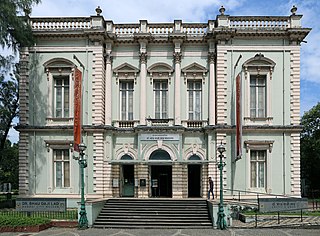
Dr. Bhau Daji Lad Museum is the oldest museum in Mumbai. Situated in the vicinity of Byculla Zoo, Byculla East, it was originally established in 1855 as a treasure house of the decorative and industrial arts, and was later renamed in honour of Bhau Daji Lad.
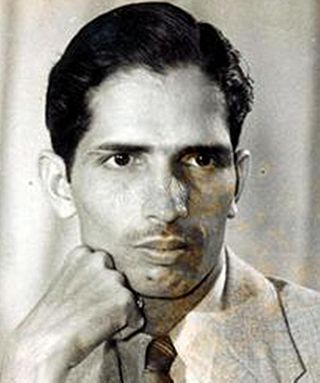
Kattingeri Krishna Hebbar was an Indian painter and art educator. He is well known for his paintings that captured the social life of the common people in India. Inspired by traditional Indian art, he combined the Western art techniques with his paintings to create a unique style of his own. Painting for Hebbar was about being true to the original self and this is what he tried to achieve in his works. In addition to his paintings, he is also known for his rhythmic line drawings and illustrations.
Gayatri Sinha is an art critic and curator based in New Delhi, India. Her primary areas of research are around the structures of gender and iconography, media, economics and social history. She founded Critical Collective, a forum for thinking about conceptual frames within art history and practice in contemporary India.
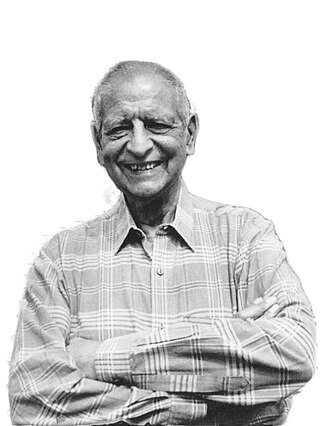
Kekoo Gandhy was an Indian art gallerist, art collector and art connoisseur, who pioneered the promotion of Indian modern art from the 1940s. He established Chemould Frames, a frame manufacturing business in 1941, soon he started displaying works of young modern artists K. H. Ara, S. H. Raza, K. K. Hebbar and M. F. Husain in his showroom windows. This led to gradual rise of modern art movement and post-colonial art in India. Eventually Gallery Chemould, India's first commercial art gallery, was opened in 1963 on the first floor of the Jehangir Art Gallery.
Valay Shende is a sculptor and artist. In 1999 he received his diploma in Art Teaching from Govt. Chitrakala Mahavidyalaya, Nagpur, and then he went on to train at the Sir Jamsetjee Jeejebhoy School of Art, Mumbai, from which he graduated with a Bachelor of Fine Arts in sculpturing in 2004. Shende later completed an artist residency at the Open 'Air' Program, Point Éphémère, Paris in 2006.His latest exhibition, Migrating Histories of Molecular Identities, shows artwork that represent situations through "the deconstruction of matter in the form of molecular discs of metal and portraits". His work has been exhibited in Mumbai at the Dr. Bhau Daji Lad Museum, and various other cities. Shende's work has been featured in The Daily Telegraph.
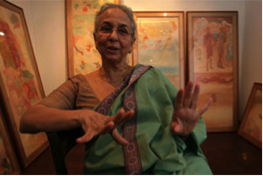
Nilima Sheikh is a visual artist based in Baroda, India.

The Kunstmuseum Wolfsburg is an art museum in central Wolfsburg, Lower Saxony, opened 1994. It presents modern and contemporary art and is financed by the Kunststiftung Volkswagen.

Madhvi Parekh is an Indian contemporary artist living in New Delhi.
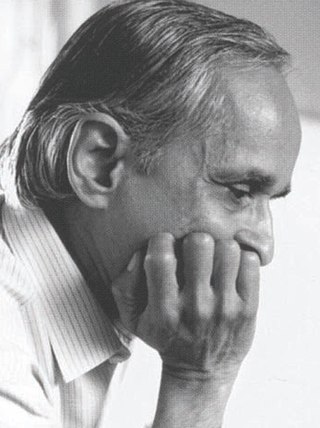
Prabhakar Barwe was a pioneer of Modern Indian painting. He was active in Mumbai, India from the 1959 until his death in 1995. Influenced by the esoteric tradition of Tantric painting, Barwe along with G. R. Santosh, P. T. Reddy, K.C.S. Paniker, Biren De, Om Prakash, K. V. Haridasan, Prafulla Mohanti and Mahirwan Mamtani was considered part of the modernist movement Neo-Tantra.

The Jehangir Nicholson Art Foundation (JNAF) is a private, not-for-profit organization located in Mumbai, India, with its core interest in promoting the preservation, exhibition, education, and research of post-colonial Indian modern art. The collection is endowed by the personal collection of the late Jehangir Nicholson, comprising over 800 pieces of art across mediums from artists including M. F. Husain, Vasudeo S. Gaitonde, S. H. Raza, K. H. Ara, etc. The foundation is currently housed in the Chhatrapati Shivaji Maharaj Vastu Sangrahalaya, managing the Jehangir Nicholson Gallery - the modern and contemporary art wing of the museum.


















